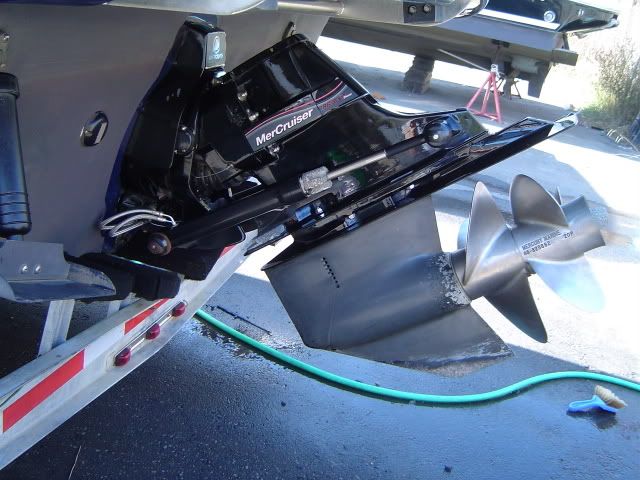DaveS, Thanks for taking the time and giving your experience and observations. one quick question! Are those Anode Pucks on your Transom Bonded to the Engine or Battery Circuit of your boat. If not they are useless at best.
It's obvious that your Lake is a Harsh environment, If it is a "Common" Occurrence for BIII's to show Galvanic Corrosion of the Aluminum there will be a "Common" Cure. On my boat, 1997 Dancer,7.4/300HP with a BIII I have installed the recommended "Second" Cathod Amplifier or as Mercury refers to it a "Mercathode". Your boat is delivered with one in place, it is either blue or black. Dave, you and everybody on your Lake need to double up the Mercathode now! No need to add the Anode portion just the Blue or Black Four Wire Unit.
Also, all those little Stainless Steel Ground Bond wires on the Drive must be in Tip Top condition.
Getting back to our boat. I also painted the Gimbal and Drive. I used Dupont Imron, which is a Two Part, or Catalyzed coating system widely used in Aviation, Marine and Fleet Applications. Why? Because it is my belief that it does a better job of "Insulating" the Drive than the Mercury recommended Tin based coating. And, for guys like DaveS and I where appearance is important you can TopCoat with Clear for that Deep Black Shine! (I like it!).
Also, an area at least 1" from the Gimbal Housing on your Hull must be free of Bottom Paint. Al W.
Here's more: http://www.sterndrives.com/bravo_3_corrosion.html
Mercury also has a heavy duty Red Controller with pucks that are unique to that controller. In fact you cannot buy the pucks separately because I checked on that. That's what the dealer is installing now at the recommendation of Mercury who has supplied the components. And my entire bonding system has been thoroughly checked out and there was one wire inside the boat they repaired as a result of checking this out.
As far as paint goes, I used several coats of Zinc Chromate primer and then Mercury Phantom Black. I have to do all my work in the dealers yard and I don't have a spray gun so the Dupont Imron is probably not an option for me unless it comes in spray cans.
Your comment that every one should have the second controller is indeed right on. Those pucks do protect the drive somewhat in our lake, just not thoroughly enough. Nothing is corroded on my upper drive whereas other ones I have looked at were corroded all around the stainless nuts and bolts and elsewhere on the upper unit. I am hoping this "heavy duty" controller will work better but I am not holding my breath. If they don't work, I will continue going back to Mercury and looking for a solution. Maybe I will ask them to coat my props with whatever they use on the Sea Core drives.:thumbsup:




